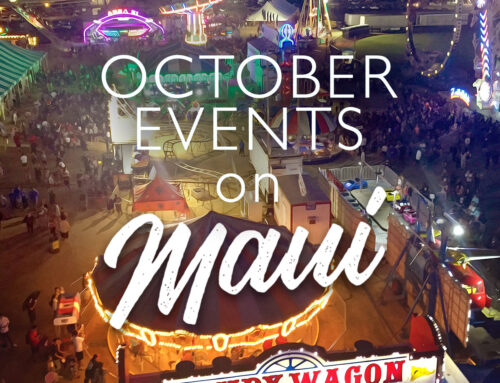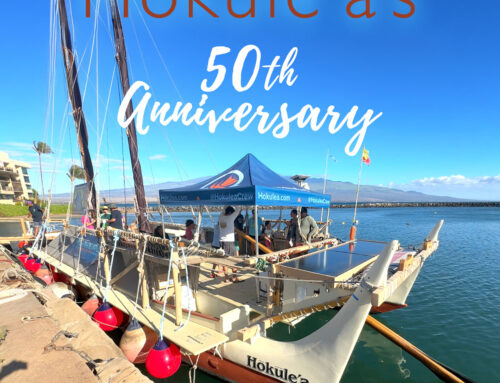Maui’s weather is one of the reasons travelers return again and again. Sunshine, warm water, and steady trade winds keep the island comfortable most of the year, but conditions vary depending on where you stay and what season you visit.
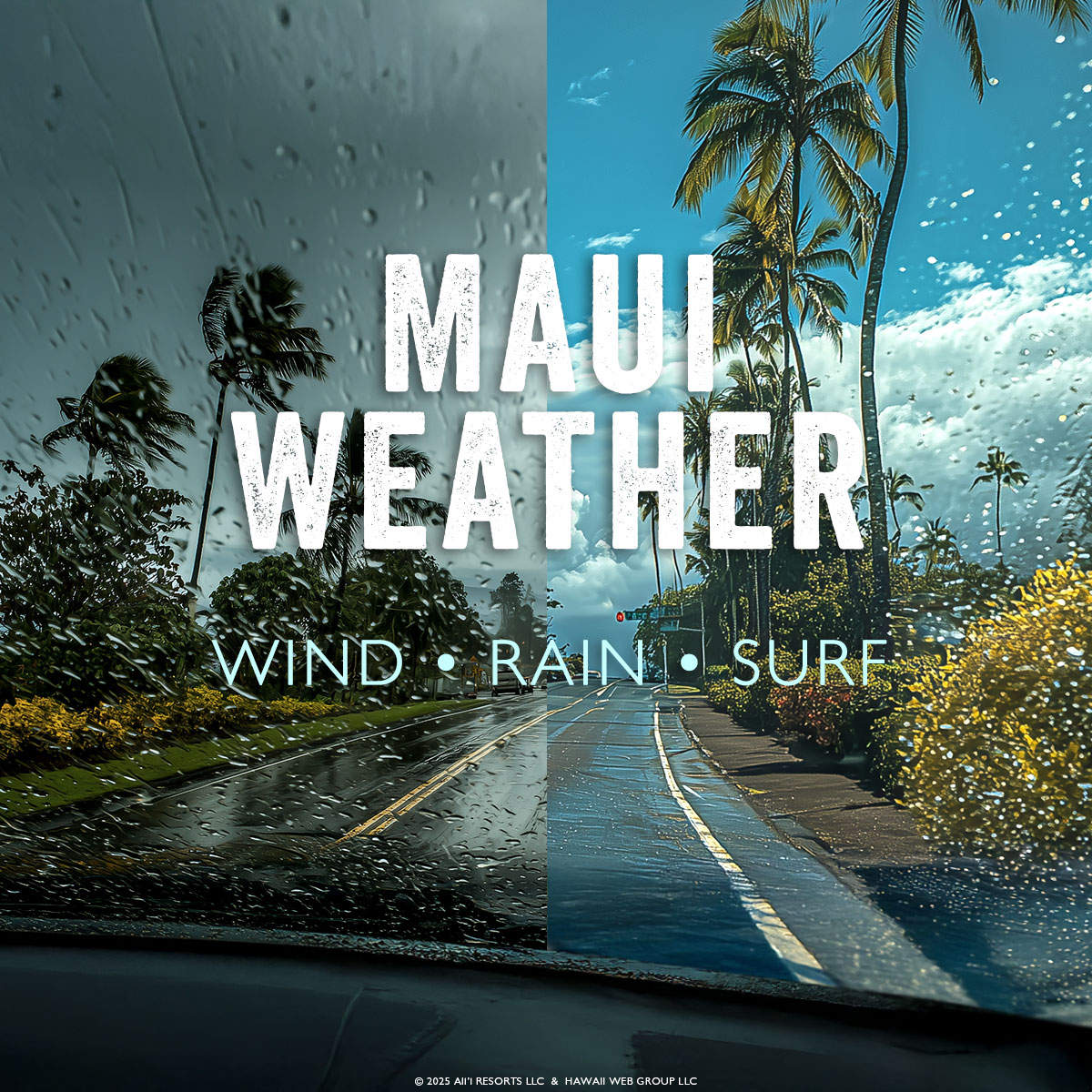
Understanding wind, rain, surf, and month-to-month changes will help you pick the right spot to stay at and the right time for your Maui vacation.

Wind on Maui
Trade winds shape daily life here. They usually blow from the northeast, unloading moisture across the mountains. South Maui (Kihei, Wailea) and West Maui (Lahaina, Ka’anapali, Kahana, Kapalua, Napili) often wake up to calm mornings, while afternoons bring breezes strong enough to ruffle your beach towel. Upcountry and the North Shore see stronger gusts, which is why Paia and Ho’okipa draw windsurfers from around the globe. Summer months tend to bring the steadiest trades, while winter winds can be gusty and less predictable.
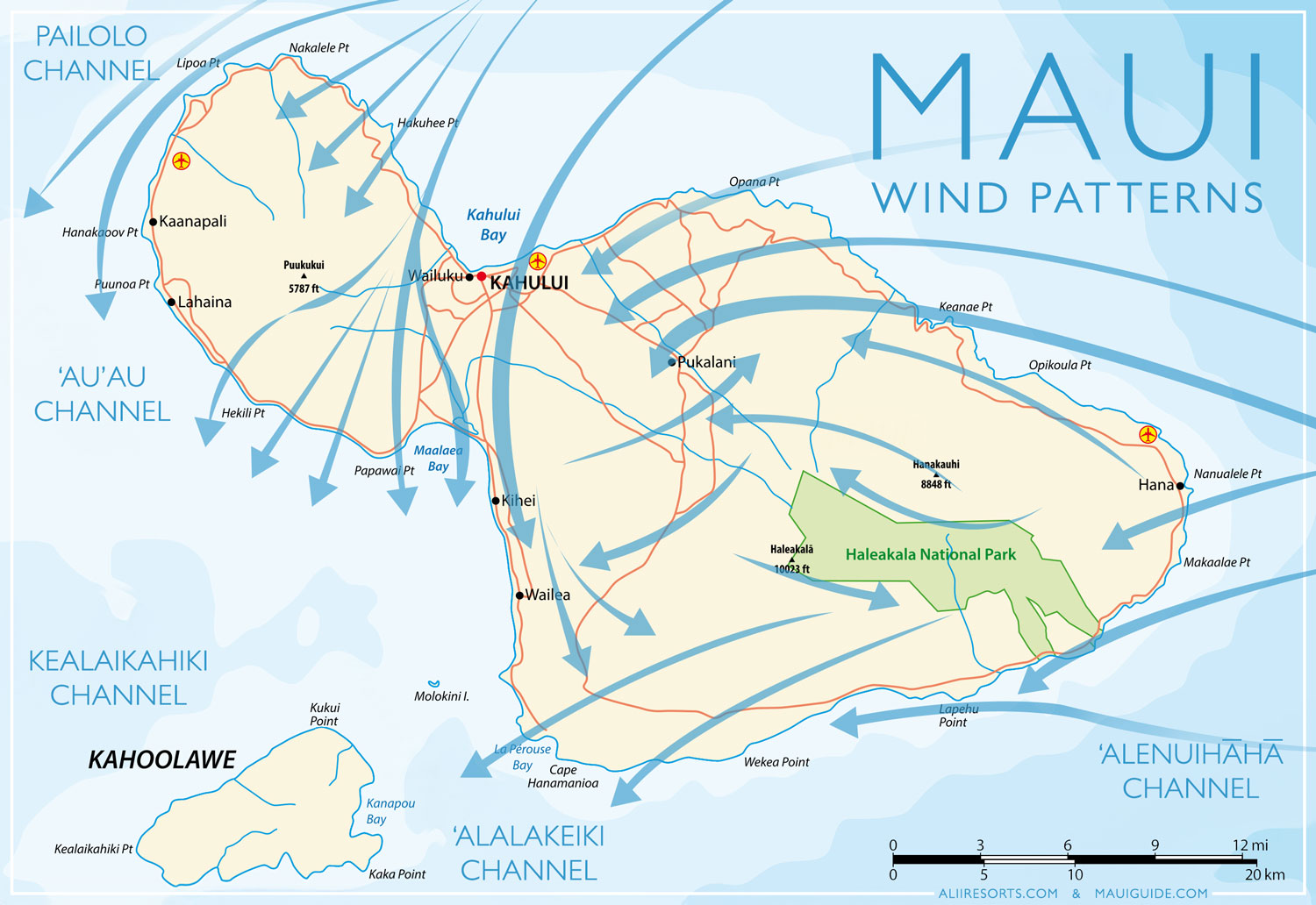
As you can see on this map, if it’s windy, you can usually predict which way the wind will be blowing. The only exception is during Konas (see below.) The windiest areas are through the central valley towards Ma’alaea. These winds blow evaporated ocean water towards our island. As it reaches the beginning of our islands, elevation forces percipitation, making it rain. That’s why you see the lusher areas on the north east side of our mountains.
Kona Winds
Kona winds are an occasional weather shift that changes the feel of Maui completely. Normally, Maui is cooled by steady northeast trade winds. But a few times a year, those winds die down and are replaced by kona winds, which blow in from the south or southwest. When Konas blow, the island feels hotter and stickier, and the south and west coasts may take over the roll of the rainy sides of the island. If Big Island is erupting, we’ll likely get some VIG (volcanic haze.)

Rain on Maui
Rainfall depends heavily on where you stay. The south and west coasts are Maui’s driest areas, often seeing little more than passing showers. Head north or east and the landscape turns lush for a reason. Hana, Haiku, and the slopes of Haleakala can receive more than 100 inches of rain a year. Upcountry towns like Kula are cooler and mistier, with showers that keep the hills green. Kapalua is much wetter than nearby Ka’anapali. Even in the wetter regions, rain often falls in short bursts, clearing quickly to sunshine.

With elevation comes cooler weather and often more rain, but even at sea level on the north east side, you can bet on plenty of rain. Though it’s amazing driving with the top down along the Road to Hana on a perfect day, you better be ok with getting wet before finding a spot to pull over safely to put the top back up!

Surf Seasons on Maui
Maui’s waves shift with the seasons. In winter, powerful swells arrive from the north, creating world‑class surf at Honolua Bay, Ho’okipa, and Peahi (Jaws). These spots are for experts, but spectators are welcome at the lookouts. Summer reverses the pattern, bringing south swells to beaches in Kihei, Wailea, and Makena. These waves are smaller and friendlier, great for beginner surf lessons and boogie boarding. Though, some south swells can be misleading and dangerous.
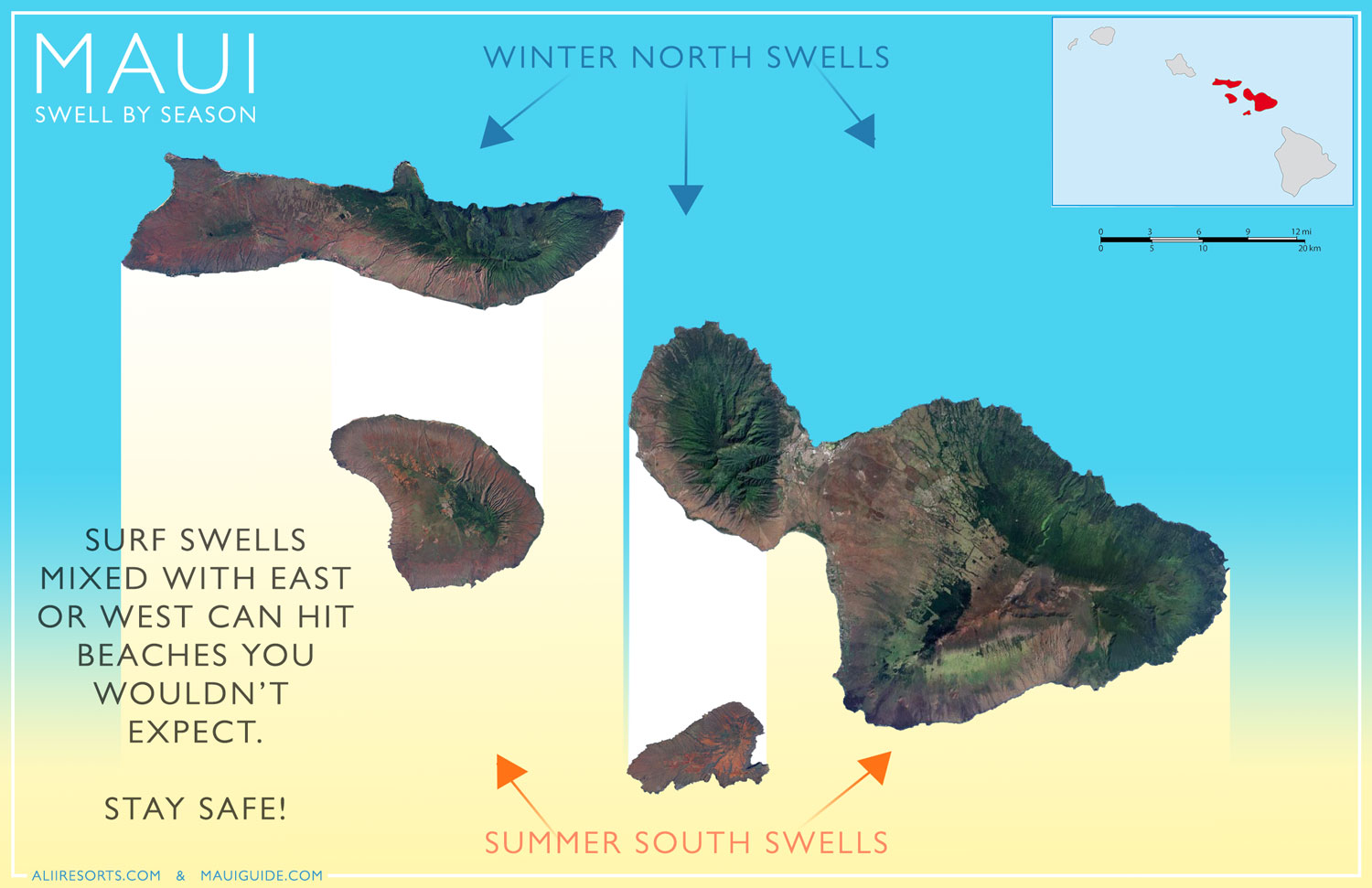
Regardless of which way the swell is projected, understand that with enough size, surf can wrap around the islands and make calm beaches and snorkel spots rough and potentially dangerous. So, keep an eye on surf updates, and make sure if you’re snorkeling, kayaking, swimming, or surfing, that you choose the right spots at the right times. Ex. even though the North Shore is usually rough, windy, and with big waves, when Kona’s blow, it might be calm and glassy. Put the effort into paying attention, and you can pinpoint perfect days around the island.
And if you do surf, unless you take a surf lesson with professional instructors, be very careful. Our waves are not like mainland waves. If you go to the wrong spot (or even the right spot on the wrong day), it can be very dangerous. Stick to the spots instructors trust and take advantage of their supervision.

Weather by Month
January– Cool mornings, passing showers, and some of the island’s clearest days. Peak whale watching season.
February– Still cool, with strong winds at times. The best month for spotting humpbacks offshore.
March– Sunny in Kihei and Ka’anapali, while Haiku and Hana get showers. Spring begins.
April– Tradewinds pick up. Leeward coasts are sunny and warm, ideal for beach days and sunsets.
May– The start of summer. Temperatures rise and the island grows busier.
June– Dry, sunny, and steady winds. One of Maui’s driest months.
July– Similar to June, with hotter afternoons balanced by tradewinds.
August– Warm and humid, with potential south swells that make for fun surf events.
September– Hottest month of the year. Expect fewer visitors but high temperatures.
October– Larger swells return to the north shore. Cooler evenings and pleasant days.
November– A transition month, mixing late summer warmth with early winter showers.
December– Breezy, with scattered rain. Warm, sunny stretches make it a festive season to visit.
What to Expect on your Maui Vacation
Wherever you stay, Maui’s weather is forgiving compared to most places. South and West Maui give you the most reliable sunshine and calm waters. North Shore and Upcountry are greener, cooler, and windier. East Maui is wild and wet, perfect for day trips. Plan around the season, but remember: the island often serves up a little of everything in a single day.
Ask us where you should stay for your ideal time period at (808) 879-6284.



